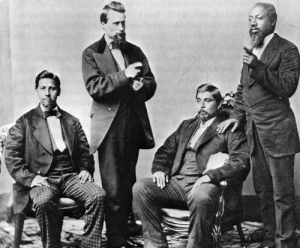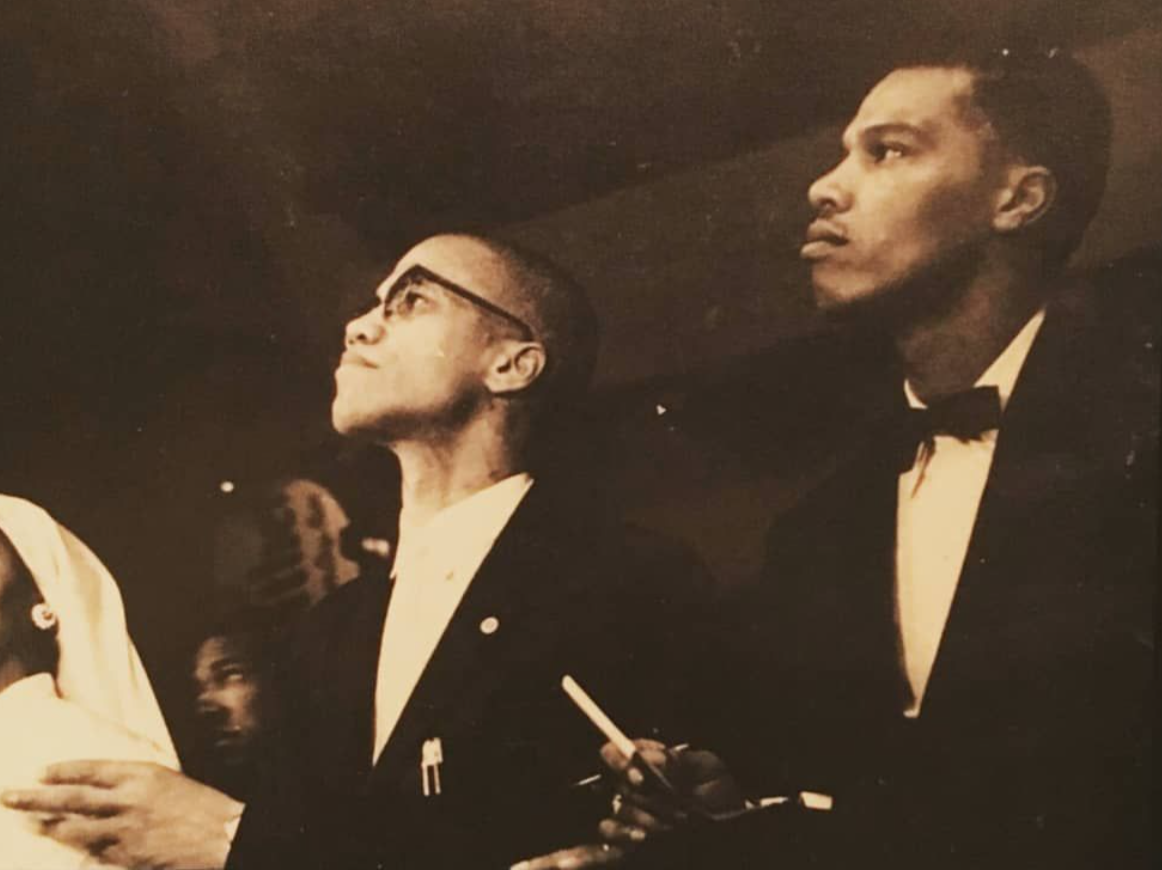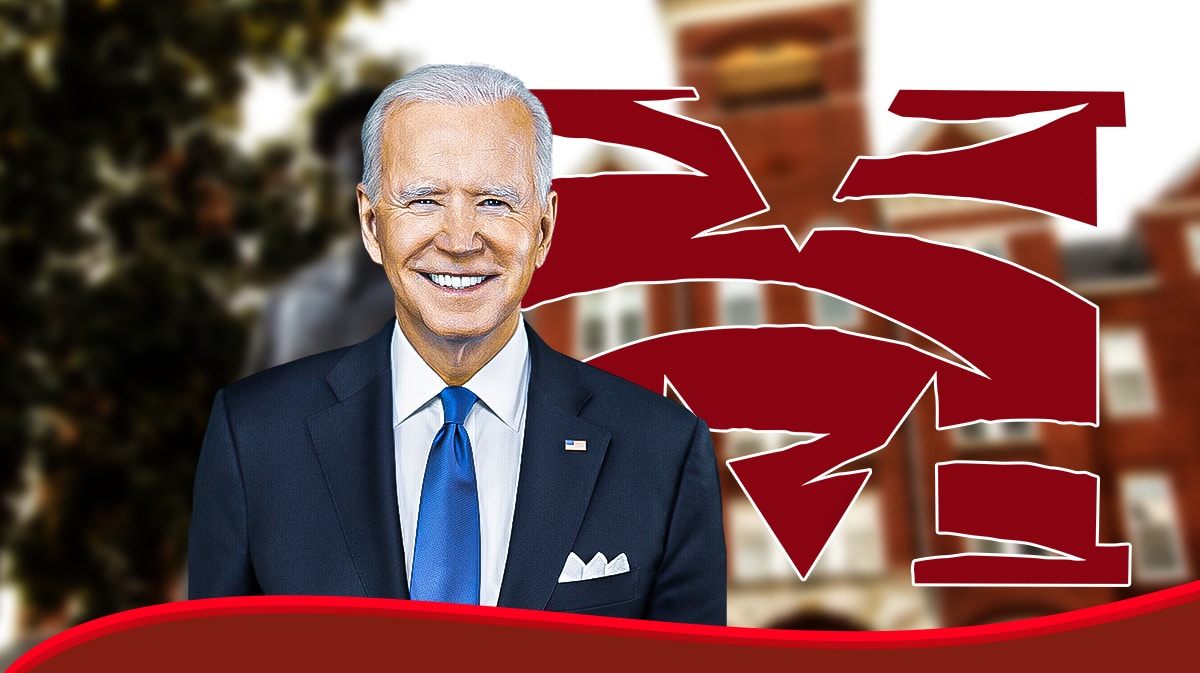(ThyBlackMan.com) As European settlements inched west, Black, white and Native Americans, fleeing forced labor within their confines, melted into the interior and mixed with those Native Americans just beyond the frontier (front tier) of the unstoppable westward expansion. William Loren Katz in The Black Indians: A Hidden Heritage notes,
“With few weapons these alliances in the woods challenged the footholds Europeans built in the Western Hemisphere. Using guerilla tactics that would become famous in China and Viet Nam in our own century, red and black people defeated superior numbers and better equipped foreign armies. This they managed while moving their families out of harm’s way. These dark liberators often proved that European rule in the Americas amounted to a thin coat of white paint over a seething dark empire. . . Before the Declaration of Independence eloquently argued for a peoples’ revolution against unjust authority, thousands of dark-skinned Americans had been fighting tyrants and slavehunters on two continents.”(Katz, 12, 13)
To counteract these powerful alliances, “Europeans played skillfully on racial differences and ethnic rivalries. They kept the pot of animosity boiling. Whites turned Indians into slavehunters and slaveowners and Africans into ‘Indian fighters.’ Light-skinned Africans were pitted against dark-skinned, free against enslaved, Black Indians against ‘pure’ Africans or ‘pure’ Indians.” (Katz, 13) It was even more complex than that. For example, recall Bacon’s Rebellion, the revolt against the planters by poor whites and blacks in Virginia in 1667. Bacon and his men also fought Native Americans and they were assisted by other Native Americans.
The European penetration of the Americas led to widespread conflict amongst overlapping groups. Colonists fought the colonizing powers, the colonizing powers fought each other, colonizers fought natives, natives fought each other, Africans joined Native Americans, Africans fought Native Americans, etc.,. Native Americans, Africans, European colonizers, and the colonial powers squared off in multifarious, shifting alliances over the course of hundreds of years. The action centered around the settlements of runaways on the frontier, referred to as Maroon communities. The anthropologists call them “tri-racial isolates,” that is, isolated pockets of population with white, Black and Native American heritage. E. Franklin Frazier refers to them as people of “indeterminate race.” Note the negative connotations in Western movies of “half breeds” and “renegades,” reflecting how they were perceived from within the European settled areas. They, however, saw themselves as freedom fighters.
“From the time of Columbus the gravest threat to European domination of the Western Hemisphere came from outlaw communities of former slaves. These maroon colonies, as they were called, were considered a knife poised at the throat of the slave system. Some fearful Europeans saw them as a sword pressed against the entire colonial system in the Americas. Men and women who lived in them saw their settlements as the fulfillment of an American dream—a sheltered home in freedom. They were a place for families to educate their young, develop their agriculture and trade, practice religion, justice, and government.” (Katz, p. 37)
In some ways the whole process was analogous to the Roman pacification of northern Europe under the Caesars. Just beyond the steadily expanding area of Roman control were bands of warriors and their families that the Romans clashed, traded and intermarried with. And the further out towards the frontier one went, the less Italian and the more indigenous looking did the Roman soldiers, officials and citizens become. A frontier is naturally porous. On one side, people move freely in and out of the hinterland, and on the other in and out of the settled area.
The frontiersmen, scouts and pathfinders universally depicted in Hollywood movies as white, were more often than not of mixed race, like John Baptist Point du Sable whose trading post became the City of Chicago. Or James Beckwourth who found the path through the Sierra Madre mountains that bears his name and facilitated the California Gold Rush. In the 1951 movie, Tomahawk, he is played by a white actor. The Searchers the iconic John Ford film starring John Wayne, about a man who spent years searching for his niece who had been kidnapped by Native Americans, is based on the real life adventures of a Black man, Brit Johnson.
The rodeo arts were largely developed by Bill Pickett a Black man of mixed race who was the mentor of Tom Mix and Will Rogers who both went on to major Hollywood careers. This writer distinctly recalls watching Sidney Poitier play a cowboy in the 1966 film Duel at Diablo, and thinking that this was a Hollywood invention while just the opposite was true.
One final note, contrary to popular belief, many of the Native Americans were Black, even before the coming of the Europeans and the Atlantic slave trade. See Dr. Ivan VanSertima’s landmark work, They Came Before Columbus and Return of the Ancient Ones by Verdiacee Washitaw.
Staff Writer; Arthur Lewin
This talented author has just published a NEW book which is entitled; AFRICA is not A COUNTRY!.
For more articles written by this talented brother click on the following link;https://thyblackman.com/?s=lewin.
















Leave a Reply